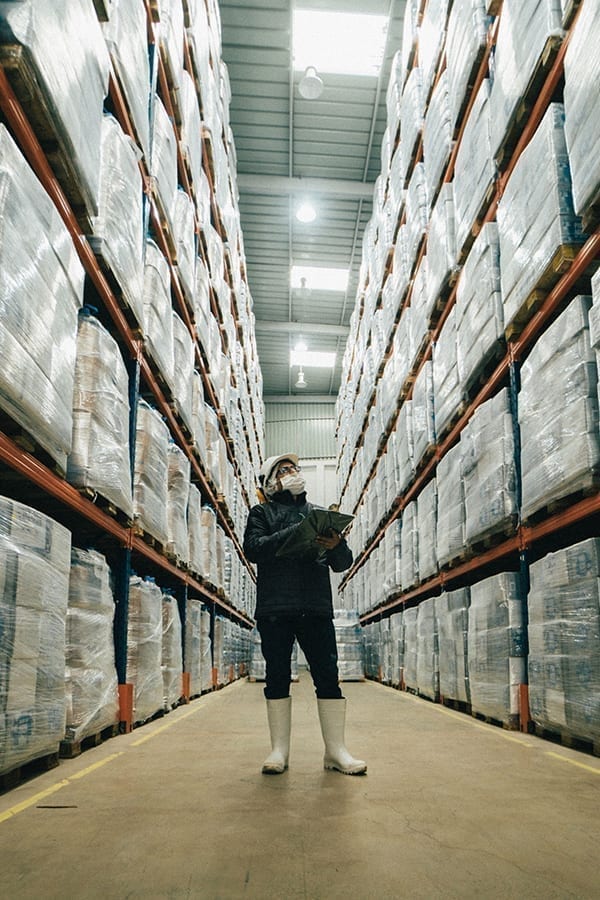What is the True Cost of Your Wasted Products and How Can You Reduce It?
The true cost of wasted products in discrete manufacturing industries goes far beyond the cost of lost product. It spills over into stockpiles, productivity, downtime and much more.
On the plus side, this means that as you reduce that Waste and Scrap it has a domino effect across your manufacturing process producing benefits you may not have expected.
We’ve got a lot of experience in helping customers identify and reduce their Waste and Scrap and gain benefits in line with their business objectives. We’re pretty good at it in fact.
In this article
The True Cost of Waste and Scrap
These are just a few of the key areas where costs are incurred due to Waste and Scrap
Wasted products and materials
Not only are you paying for unusable materials, you’re also paying to dispose of them.
Rework costs
Maybe you can make the Waste and Scrap useable again, but that involves additional production costs.
Wasted production time
The man hours, machine running costs and planning and scheduling all have a cost.
Out of date stocks
If you can’t rework off-spec products fast enough it’s going to become additional Waste and Scrap.
Increased safety stocks
When you know you’re going to have Waste and Scrap you have to be prepared with extra
Unsatisfied customers
Waste and Scrap increases lead times which means you can’t react as quickly to customer demands.
The Causes of Discrete Manufacturing Waste and Scrap
Waste and Scrap products can occur at any stage of the manufacturing process, but the root cause of the Waste and Scrap may occur before or even after manufacture.
To start with, you could receive poor quality components from suppliers. Caught early enough you may be able to rework the materials to specification, but if the issue is discovered later on it may lead to wasted units.
If there are issues in the production process itself, such as poorly calibrated machines, synchronized sub-assembly issues or welding errors, then good products can become Waste and Scrap and the production efforts put into it are also wasted.
Finally, when things change at the customer end, you may find that demand drops so your stock piles up until product revisions make it obsolete. These are just a few examples of what can happen. To get a better overview of your potential weak-spots you’d need a complete audit of your supply chain.


6 Things You Need to Know to Reduce Product Waste and Scrap
Reducing Waste and Scrap and all of its associated costs is only possible if you have effective traceability giving you a clear overview of every step of the production process. Here’s what you need to know to reduce that Waste and Scrap:
Supplier Components
Ensuring you keep track of exactly which components have come from who is the first step in tracking the value of your suppliers.
Supplier quality
Supplier quality will influence your final product quality. If they aren’t consistent you need to know so that the issue can be addressed.
Process routing
Knowing which processes your products passed through can help you to identify processes that are affecting quality. This is key to continuous process improvement.
Batch confirmation
You must be able to confirm which component batches have gone into making a product in order to track the processes and suppliers involved in production.
Process conditions
Do you know what the process conditions were when the product passed through? Patterns in variations in conditions can help you identify reasons for quality issues.
Stock location and condition
To efficiently manage your stocks you need to know where your materials are and how long they’ve been there.
Benefits Beyond Waste and Scrap Reduction
Reducing Waste and Scrap through effective traceability won’t just reduce the amount of Waste and Scrap you’re producing. You’ll also get a number of other benefits:
Reduced stock
An improved RFT means you don’t need so much stock in reserve for when things go wrong.
Reduced lead times
If you’re not throwing it away it’s getting out to customers faster with more flexibility to respond to changing demand.
Improved customer experience
With solid traceability comes the ability to provide customers with evidence and assurance of your certifications.
Reduced product recalls
If you know where everything is at all times, there’s a much lower chance of off-spec quality slipping through the net.
Simplified regulatory compliance
With effective traceability in place compliance becomes part of the process rather than an additional task.

A Trusted Partner for Waste and Scrap Reduction
Why does ATS have such a strong reputation for reducing Waste and Scrap in discrete manufacturing industries? Well, there are a number of reasons I can give you for but here are a few key ones.
First up, we have very strong discrete industry domain expertise. Having worked around the globe for over 30 years and successfully delivered over 5000 projects in the discrete manufacturing industries, we know what we’re talking about. We also apply and comply with all the relevant industry standards.
But most importantly, we’re Independent. We evaluate your requirements and then select, design and implement the solution that will best help you achieve your business goals, no matter the technology or process required.
As a trusted partner for sustainable manufacturing excellence solutions, ATS Global will help you reduce your Waste and Scrap and attain your business goals faster.
Let us help you reduce your Waste and Scrap


